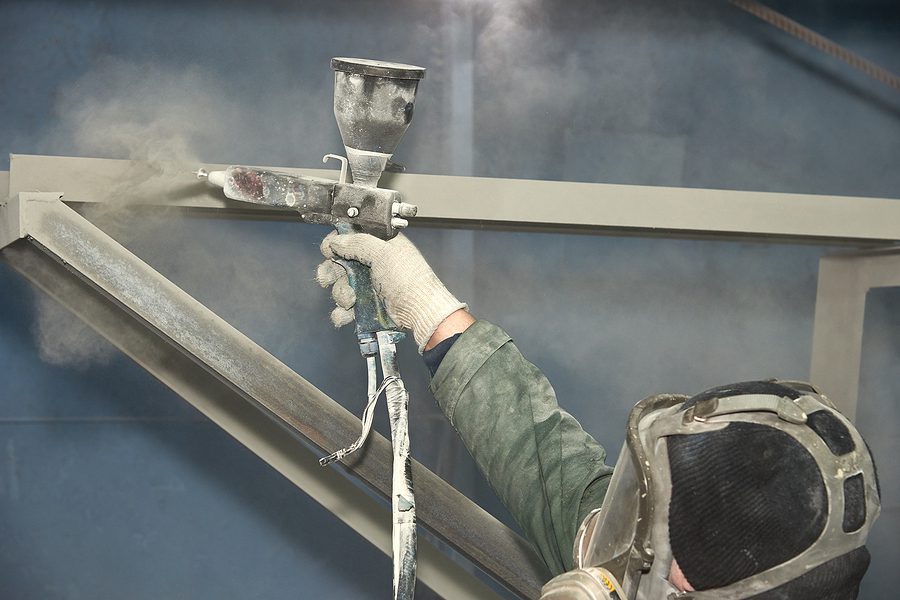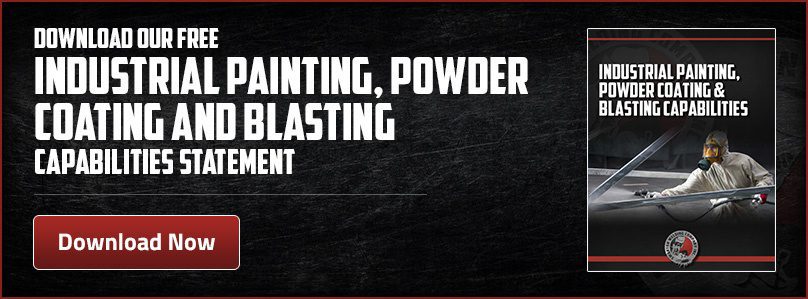Exploring Various Finishing Options for Fabrication Projects
The final step in preparing metal fabrication projects is finishing. The best way to make products resistant to corrosion, as well as providing higher electrical, chemical, and tarnish resistance and adding durability is finishing. Choosing a finish is usually determined by the intended use. There are many different finishing options for fabrication projects. When exploring the various finishing options, consider how your product will be used, how cost-effective the finishing methods may be for your project, and which process aligns best.

Paint
Paint is the traditional route for metal fabrication finishing. Painting can be done through liquids or sprays and both will provide an evenly coated finish, no matter how thick or thin. There is a large range of color options and this finishing choice is economical for small jobs. If your project requires a very thin finish coat, paint is a great option as it allows you to do just that. Painting is often done after sandblasting for increased durability and a superior finish.

Primer Only
Primer is applied directly to a clean steel surface or a sealed metal coating. Primer is commonly used as a first step for future finishing on-site, such as fire resistant/retardant coating. It will provide good adhesion for subsequently applied coats as well as corrosion inhibition. Zinc-rich primers are most commonly used in this style of finishing.
Epoxy
Epoxy coating is a thick, protective material typically used on carbon steel to prevent exterior deterioration. There are two and three component resins involving resin and hardener. Epoxy coatings have a high gloss finish and provide superior protection against moisture, chemicals, corrosive fluids, extreme weather, and temperatures. Epoxy is extremely durable, non-toxic, easy to clean and maintain, and impact resistant. Epoxy coating is most commonly used for industrial coating applications.
Urethane and Polyurethane
Urethane and polyurethane are powerful and durable coatings for your metal products. Thermosetting polymer substances will not melt when heated. Polyurethane is commonly used as an architectural metal finishing. Some of the benefits include a fast curation, easy to clean and maintain, and a resistance to chemicals, acid, alkali, weather, abrasion, and oil. Urethane and polyurethane are often used over primer since it has UV resistance. It is usually used for the protection of structural steel in industrial settings.
errorAnodizing for Aluminum
Anodizing will convert the surface of aluminum to aluminum oxide. It will deposit a thin, protective film, altering the molecular composition of the surface. Anodizing has several benefits including improved corrosion resistance, a durable finish, UV protection, and will not show fingerprints.
Powder Coating
Dry plastic powder can be melted and applied to surfaces in a variety of colors and textures. It is typically a decorative option, and more durable than paint. Technicians melt powder and apply it to surfaces in a variety of colors and textures, which is twice as thick as paint. The benefits of powder coating are numerous and practical. Powder coating is an economical option, making it ideal for large projects. The hard finish reduces chips and scratches, reducing visual wear and tear. It involves no harsh chemicals, minimal overspray, and has a fast curation time. Powder coating is ideal for products that move frequently, as it is flexible and will easily bend and yield to the material it is applied to.
Galvanizing
Galvanized metals are coated with a protective layer of zinc by dipping them into a molten zinc bath to coat them. Galvanizing offers many advantages. It is economical, costing less than many other finishing methods. It offers a long life expectancy and will never need touch ups. Galvanizing is also a quick process, requiring only one dip, while other coatings take much longer. Galvanizing is best used for steel products. The zinc will react with the steel, forming a protective seal on the metal.
Metal Plating
Metal plating involves applying a thin layer of material like copper, nickel, chromium or aluminum to the substrate. The benefits of metal plating are an improvement in corrosion resistance, surface friction, paint adhesion, and decorative appeal.
Sand Blasting
Technicians will spray sand or other abrasive materials at a high speed to produce a rough surface to help the paint adhere to the steel. The types of sand blasting are based on the degree of cleaning needed. There are several advantages to sand blasting. Sand blasting combines surface prep and cleaning in one step, removes contaminants, and can be used prior to other finishing methods, such as plating, painting, or coating.

In most cases, the finish your project needs is determined by the product’s end use. Consider which process best suits the use of the product, the speed and budget your project requires, and whether the finishing technique is suitable for the materials used in your build. Your metal fabrication partner can assist in the finishing stage, helping your team determine the best option for you and your project needs. Swanton Welding is your one-stop-shop for custom fabrication. Our capabilities allow us to handle your build from start to finish. Contact us today to learn more about how we can assist in planning out your next project.
